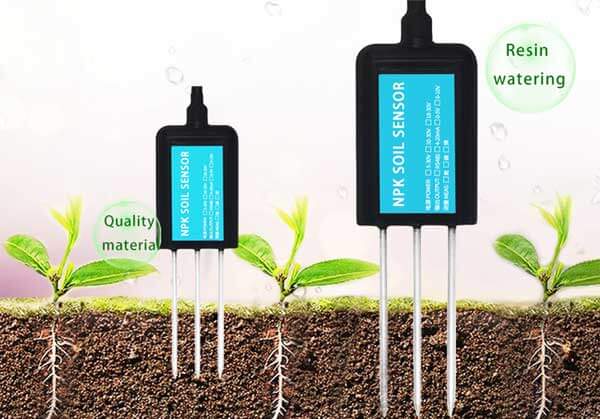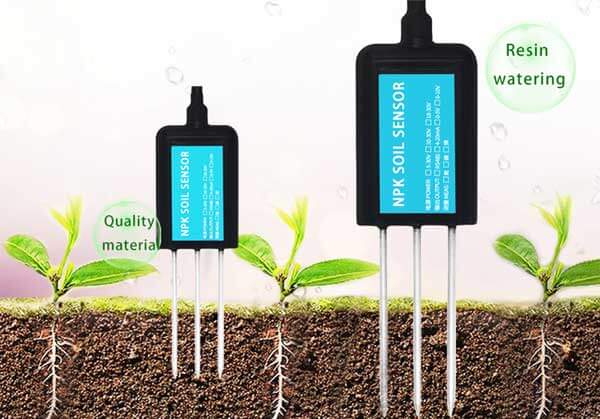Precision agriculture is a modern approach to farming that utilizes technology and data analysis to optimize crop production. By integrating advanced tools and techniques, precision agriculture aims to increase yields, reduce costs, and minimize environmental impacts. One crucial aspect of precision agriculture is soil management, as soil health directly affects crop growth and productivity. Soil sensors play a vital role in providing accurate and real-time information about soil conditions, allowing farmers to make informed decisions and take appropriate actions. In this article, we will explore the potential of soil sensors in precision agriculture and how they can revolutionize the way we farm.

Types of Soil Sensors:
There are various types of soil sensors available, each designed to measure specific soil properties. Some commonly used soil sensors include:
Moisture Sensors:
These sensors measure the water content in the soil, providing valuable insights into irrigation needs. By monitoring soil moisture levels, farmers can optimize irrigation schedules, reduce water waste, and prevent over or under-watering.
pH Sensors:
pH sensors determine the acidity or alkalinity of the soil. Different crops thrive in different pH ranges, and maintaining the ideal pH level is crucial for optimal plant growth. pH sensors enable farmers to adjust soil pH through targeted amendments, maximizing nutrient availability and uptake.
Temperature Sensors:
Soil temperature affects seed germination, nutrient availability, and microbial activity. Temperature sensors help farmers understand soil temperature patterns, allowing them to time planting activities and apply appropriate soil management practices.
Nutrient Sensors:
These sensors measure the concentration of essential nutrients in the soil, such as nitrogen, phosphorus, and potassium. By monitoring nutrient levels, farmers can precisely apply fertilizers where and when needed, minimizing waste and reducing environmental pollution.
Salinity Sensors:
Salinity sensors assess the salt concentration in the soil. Excess salts can harm plant roots and inhibit nutrient uptake. Salinity sensors enable farmers to manage salt levels, ensuring optimal conditions for crop growth.
Benefits of Soil Sensors in Precision Agriculture:
Enhanced Crop Management: Soil sensors provide real-time data on soil conditions, enabling farmers to make timely decisions about irrigation, fertilization, and other agronomic practices. By tailoring inputs based on actual soil conditions, farmers can optimize resource allocation, improve plant health, and increase yields.
Resource Efficiency:
Soil sensors help farmers reduce input wastage by providing accurate information about water and nutrient needs. By adopting precision application techniques, such as variable rate irrigation and fertilization, farmers can minimize costs and environmental impacts associated with excess usage.
Disease and Pest Management:
Some soil sensors can detect the presence of soil-borne pathogens and pests. Early detection allows farmers to implement appropriate measures, such as targeted treatments or crop rotation, to prevent the spread of diseases and reduce yield losses.
Environmental Sustainability:
By optimizing inputs and minimizing the use of agrochemicals, precision agriculture helps protect water quality, reduce greenhouse gas emissions, and preserve biodiversity. Soil sensors play a vital role in enabling sustainable farming practices by providing precise guidance on resource management.
Data-Driven Decision Making:
Soil sensors generate a vast amount of data that can be analyzed and integrated with other agronomic data layers, such as weather information and crop performance records. By harnessing the power of data analytics and machine learning, farmers can gain valuable insights, identify trends, and make evidence-based decisions for long-term farm planning.

Challenges and Future Directions:
While soil sensors offer numerous benefits, there are challenges that need to be addressed for wider adoption and improved functionality:
Cost: Some soil sensors can be expensive, making them less accessible to small-scale farmers. Efforts should be made to develop affordable options without compromising accuracy and reliability.
Calibration and Maintenance:
Soil sensors require regular calibration and maintenance to ensure accurate measurements. Farmers need to be trained in proper usage, calibration procedures, and sensor maintenance to obtain reliable data.
Sensor Integration: Integrating soil sensor data with other farm management systems and technologies can enhance the overall efficiency and effectiveness of precision agriculture. Standardization and compatibility between different sensor brands and data platforms are essential for seamless integration.
Data Interpretation: Analyzing and interpreting large volumes of soil sensor data can be challenging for farmers without adequate training or technical support. User-friendly software tools and decision support systems should be developed to simplify data interpretation and provide actionable recommendations.
Conclusion:
Soil sensors have the potential to revolutionize precision agriculture by providing real-time and accurate information about soil conditions. By embracing soil sensing technologies, farmers can optimize resource allocation, reduce input wastage, improve crop health, and promote environmental sustainability. With ongoing advancements in sensor technology and data analytics, the future of precision agriculture looks promising, offering opportunities for increased productivity and profitability while minimizing environmental impacts. As farmers dig deeper into soil sensing capabilities, they pave the way for a more efficient, sustainable, and resilient agricultural sector.
